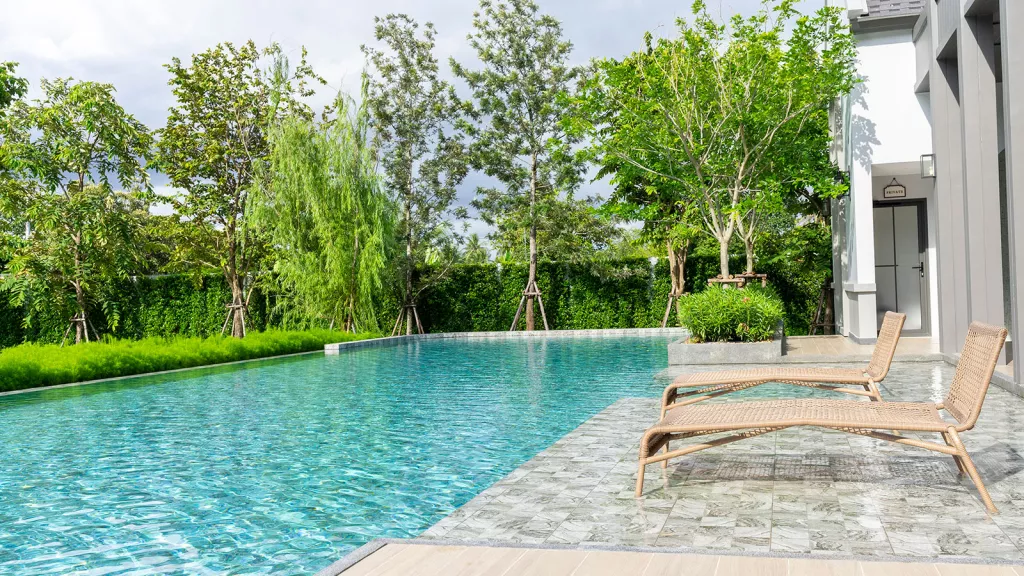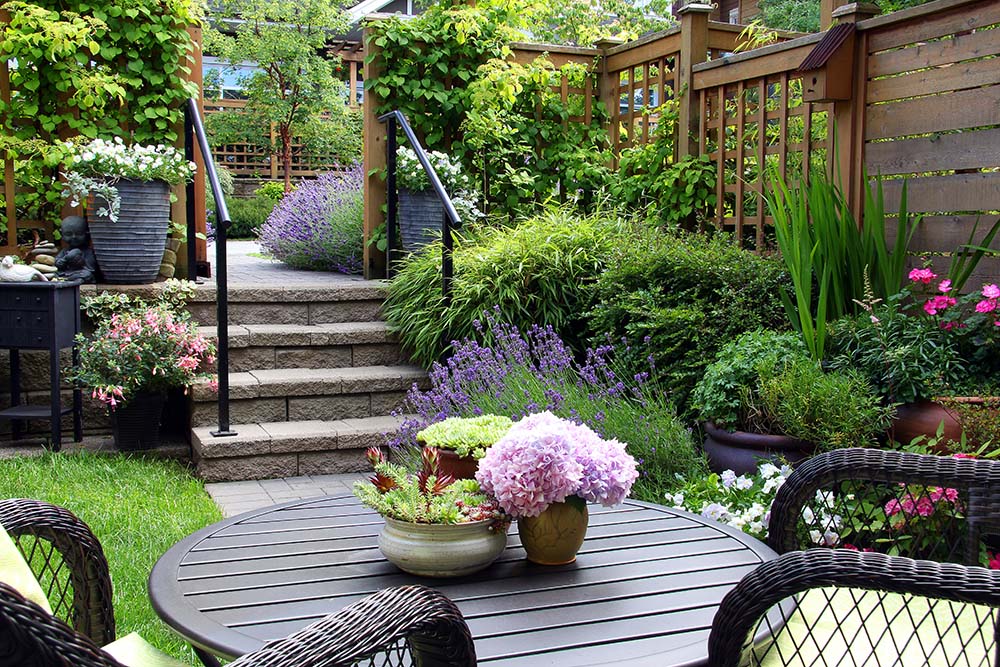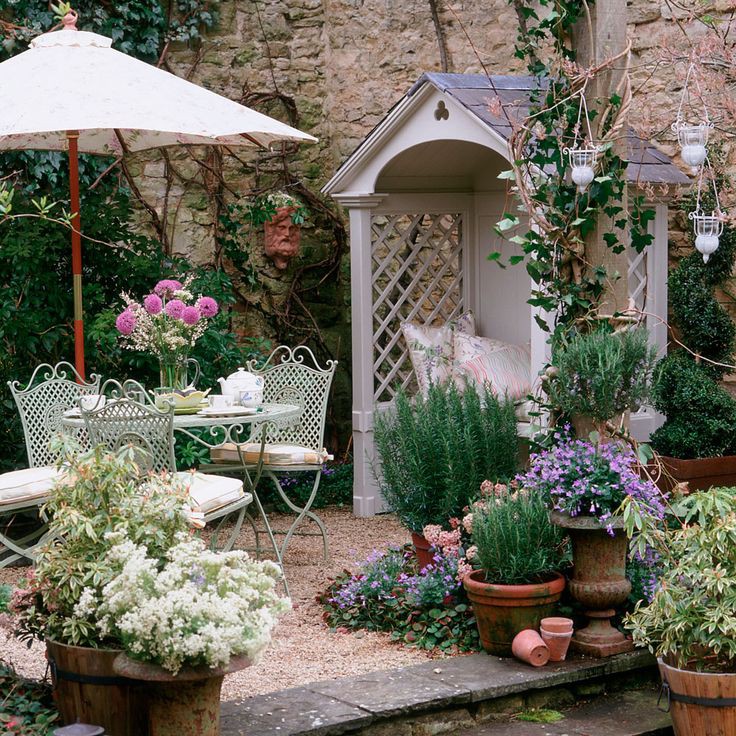A backyard pool project is an exciting addition to any home, but it can be a costly and time-consuming undertaking, falling somewhere between the expense of buying a house and purchasing a new car. Due to the substantial investment required, it’s crucial to avoid common pool planning mistakes that can cause your project’s costs to spiral out of control.
9 Pool planning mistakes – errors to avoid when designing and building your backyard oasis
When planned carefully, a pool in your backyard can become the focal point of your outdoor space, providing a perfect gathering place for friends, family, and neighbors to cool off during hot summer days and celebrate special occasions. Additionally, it offers an opportunity to create lasting memories for generations to come. With a heated pool, you can enjoy daily fitness and improved health benefits by swimming for several months a year, making your yard a never-ending vacation destination.
However, before embarking on such a significant investment, it’s essential to be informed, practical, and well-prepared.
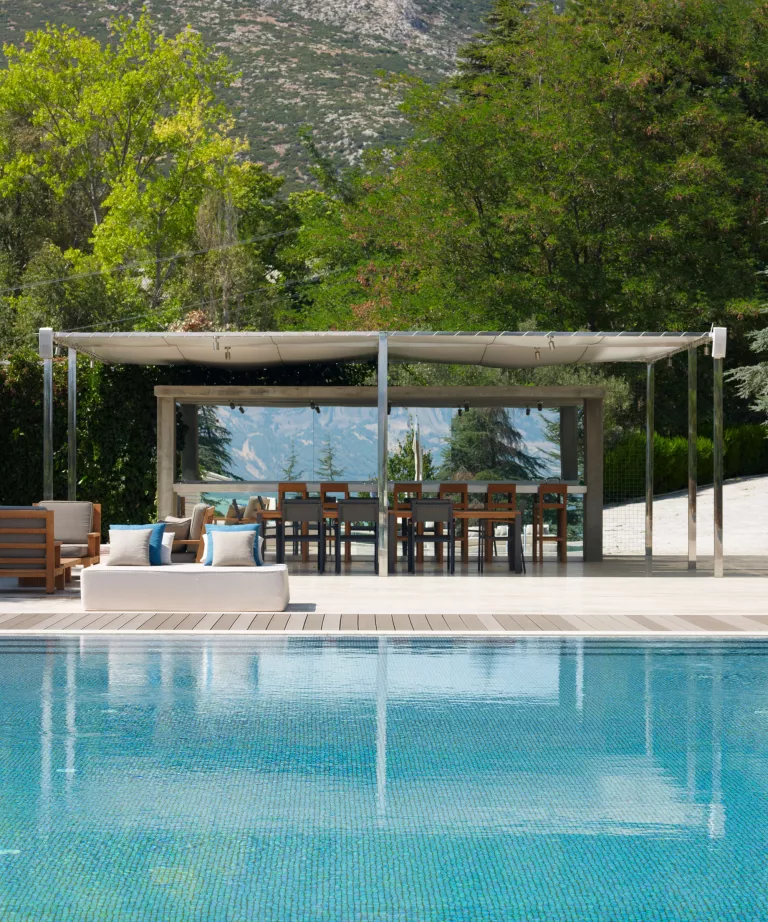
9 Pool Planning Mistakes You Need To Know
It’s a common misconception that any backyard can accommodate a swimming pool. In reality, there is no one-size-fits-all solution as the size, shape, and slope of each yard are unique.
When planning a pool, it’s crucial to consider several factors, such as finding the ideal size and location and hiring the right professionals to ensure the project’s success. Proper research and planning are key to achieving a seamless pool project. The more informed and knowledgeable you are before commencing this significant endeavor, the greater the potential for success.
1. FORGETTING TO DO THOROUGH RESEARCH
Before contacting a professional to plan your pool project, it’s essential to research the types of pools and materials that interest you, including any additional features such as an integrated spa, beach or zero-entry pool, swim-up bar, heating, and more. Take notes and ask for referrals from homeowners who have had similar pool projects in your region.
It’s crucial to have a clear understanding of your requirements before starting your pool project. As Tim Coleman of Fluid Design Concepts in Waynesboro, Virginia, says, “Nobody knows what you need, want, or desire more than you.” Consider the number of people and age range who will use the pool, along with its primary purpose, whether for exercise or entertainment. Do you prefer the idea of a natural swimming pool? Do you want water features such as fountains and waterfalls? Will your pets swim in the pool with you, and is there enough space left in your yard for your children and pets to play? Do you want to add a pool house or specially designed pool patio?
There are numerous factors to consider, and it’s vital to think through each aspect carefully to ensure that your pool project meets all your needs and expectations.
2. NOT ESTABLISHING A REALISTIC BUDGET
The possibilities for designing your backyard pool are endless, with social media showcasing cute cocktail pools for parties and television series featuring extravagant pool builds. However, it’s crucial to be realistic about the costs involved in building a pool.
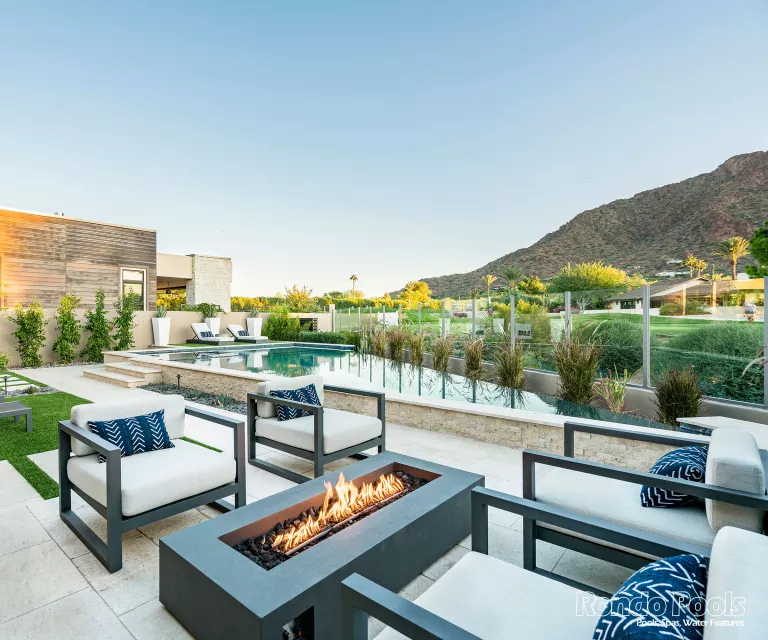
(Image credit: Rondo Pools)
As Tim Coleman advises, “Establish a realistic budget, because money can buy just about anything. Many things in the pool world, especially those found on the internet, are out of most budgets.” It’s essential to set a budget that aligns with your financial situation and expectations to avoid overspending.
Furthermore, it’s crucial to consider the potential return on investment when selling your house. While a pool can add value to your home, it’s unlikely that you’ll recoup the full cost of your investment. Therefore, it’s essential to view your pool project as a long-term investment in your enjoyment of your property rather than solely as a financial investment.
3. NOT HIRING PROFESSIONALS
Before selecting a licensed pool contractor, it’s crucial to research their reputation and experience. Additionally, it’s recommended to consult with a geotechnical engineer prior to excavation to assess the soil conditions. As Stephen Neville, Vice President of Stainless Aquatics in Del Mar, California, advises, “On most contracts, the soil conditions are the responsibility of the homeowner.” A geotechnical engineer may be recommended by the pool design/build company’s structural engineer, or you can contact organizations such as the Association of Environmental & Engineering Geologists (AEG) or Cal Geo.
According to Lea Frederick of Vue Custom Pools in Greensboro, North Carolina, tradespeople in other industries may not be aware of the limitations of materials used in submerged or chemically treated environments or construction methods and equipment sizing for workability, maintenance, and clearance needs. It’s essential to select a licensed pool contractor who adheres to a code of ethics, as required by accreditations and associations within the industry.
4. FAILING TO LOOK AT THE BIG PICTURE
When planning a pool construction project, it’s essential to consider the whole yard as part of the plan. In addition to consulting with a pool construction company, it’s also wise to consult with a licensed landscape architect. They can help you create a holistic vision for your backyard, taking into account not only the pool but also the surrounding environment.
According to Tim Coleman, a licensed landscape architect can provide an “intuitive feel” of what’s possible now and in the future. You can find licensed landscape architects through state chapters of the American Society of Landscape Architects (ASLA). While pool construction companies build and install pools, landscape architects work on the whole backyard landscaping, including hardscape and softscape (plants).
Outdoor lighting is also an essential component of your pool construction project. Proper lighting can enhance the aesthetics of your backyard at night while providing safety. Surrounding landscape and feature lighting can make your project look amazing, says Lea Frederick.
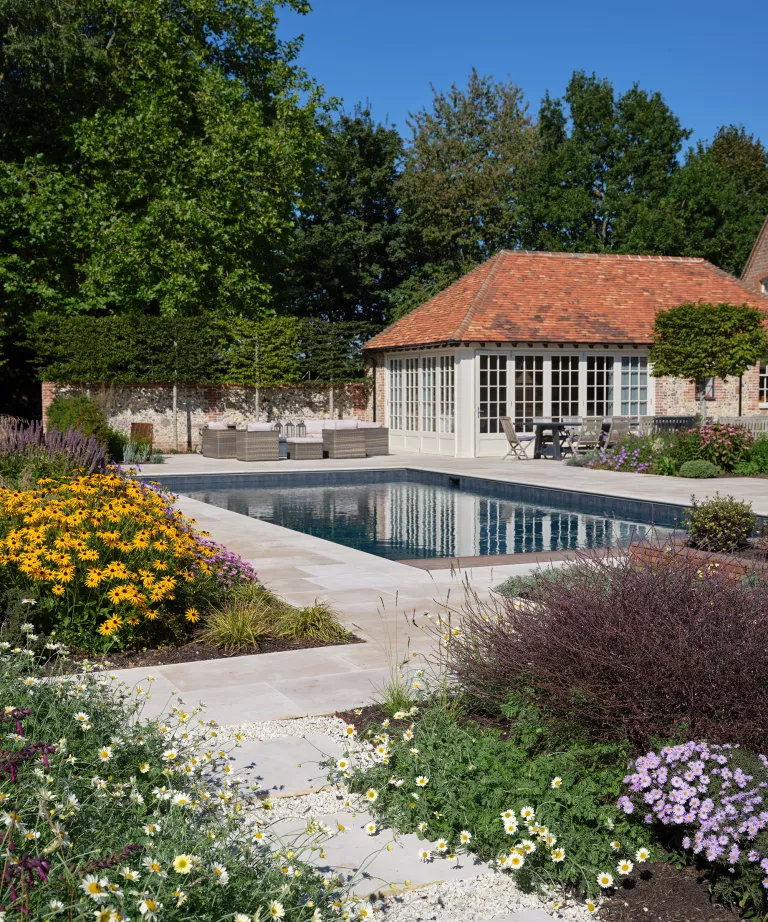
(Image credit: Artisans of Devizes)
5. IGNORING LOCATION AND SIZE
Suppose you own a plot of land that spans one acre and you’re interested in constructing a pool in the backyard. You decide to approach a builder to dig a large hole at the far end of your plot. Upon completion of the project, as you and your guests exit the pool area at night, you realize that the pool is located far away from your house, which makes it difficult to navigate across the itchy grass in the dark. At this point, you may wonder who came up with the idea of constructing the pool so far from the house in the first place.
On the other hand, if you have a tiny backyard and your family desires a regular or larger-sized pool, there is no stopping you. Your entire backyard is now a pool, providing you the luxury to jump or fall into the water as soon as you walk out the back door, regardless of your intention.
Before embarking on your aquatic dream, it is essential to consider the available property space. As Tim Coleman suggests, you may have a vision of a waterpark, but in reality, you may only have enough space for an enhanced water garden. Therefore, it is important to determine what will fit in your space. Most people have sufficient space for a pool that falls between these two extremes.
To determine the ideal pool location, Coleman recommends using a rope or extension cord to demarcate the pool area. You should then assess the area relative to the rest of the yard. Is it close enough to the back door but not too close? Is it situated in a shaded area with mature trees most of the day, which gets little sun? Does it provide access to other parts of the yard, such as the grill station, dining, seating, or backyard playground area?
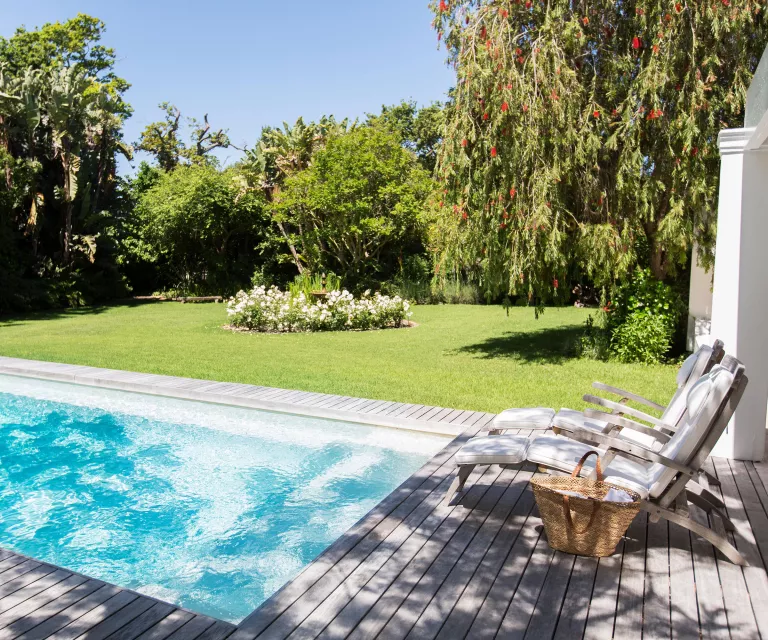
(Image credit: caia image/Alamy Stock Photo)
6. NOT READING OR UNDERSTANDING CONTRACTS
Another common mistake made during pool planning is the misunderstanding of contracts. To prevent this from happening, it is essential to obtain all the details of the pool project in writing.
The California Contractors State License Board (CSLB) recommends that the contract includes a description of the work, materials, and equipment to be used. It is also essential to have a plan and scale drawing of the pool’s shape, size, and dimensions, as well as the construction and equipment specifications.
According to Tim Coleman, an agreement between the parties should outline any possible ‘what ifs’ and other contingencies that may not have been evident at the beginning of the project. He suggests that all parties should review the contract and fill in any gaps until everyone is comfortable with the agreement. If there are any doubts, the person representing the contractor should be informed, and they should provide clarification.
Coleman also recommends recording or filming the transaction and acknowledging the recording with all involved parties. This way, you can play it back to clarify any points of confusion.
7. NEGLECTING BUILDING LOGISTICS
Excavating an inground pool requires certain precautions to be taken before beginning the project. It’s essential to call 811, the national dig hotline, to mark the location of any buried utilities to avoid accidentally digging into underground utility lines.
Moreover, it’s important to ensure that building equipment and machinery such as skid steers, backhoes, excavators, and wheelbarrows have adequate access through a large-enough side yard, fence, or wall that will be temporarily removed. Additionally, if you have a septic system or well on your property, it may need to be relocated, and you will need to consider existing and new stormwater management plans.
Another crucial consideration is understanding the boundaries of your property. You can obtain a copy of the plat/survey with the deed from your mortgage or title company or your city or county tax assessor, land records, or building department.
8. FAILING TO CHOOSE A STYLE THAT COMPLEMENTS YOUR HOME
If you live in a Victorian-style home and are considering adding a swimming pool, it’s essential to consider the architectural style of your home and the exterior materials used for the home and existing hardscape. For instance, if the facade of your house is made of stucco, brick, wood, or something else, you should ensure that any landscape enhancement complements the existing home’s architecture.
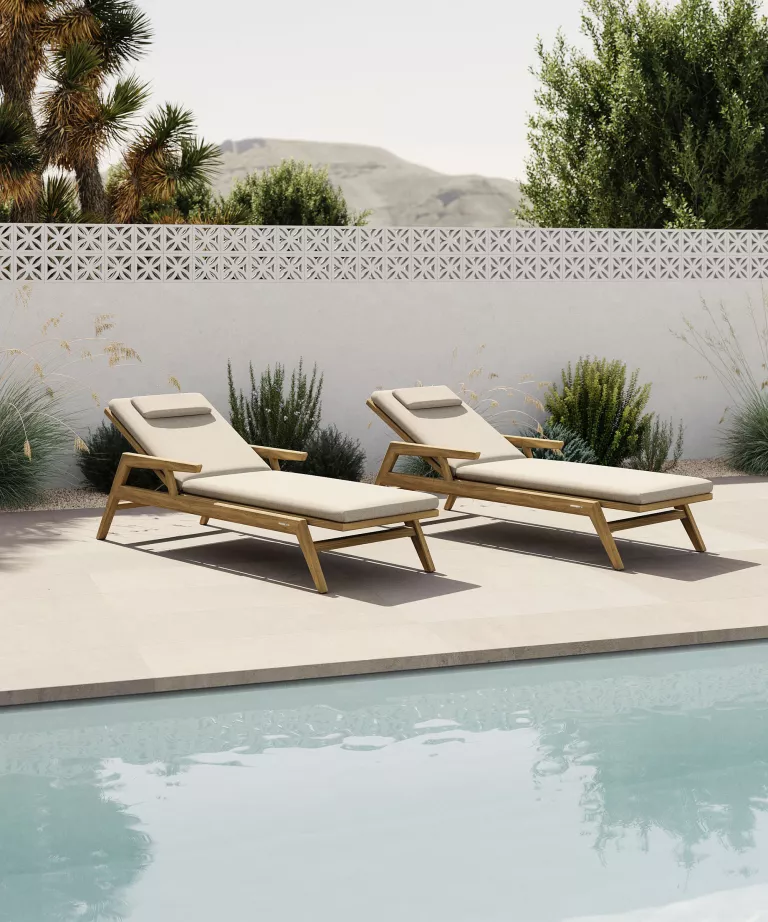
(Image credit: Go Modern Furniture)
As Tim Coleman suggests, the house, pool landscaping, and pool should look like they were all designed at the same time or by the same firm. Therefore, the materials, colors, and textures should integrate with one another and not appear as if they were added as an afterthought.
It’s crucial to ensure that the pool and pool deck match the style and materials of the house, even if the contractor is pushing for a modern swimming pool and contemporary pool deck. By doing so, you can ensure that the overall look of your property is cohesive and visually appealing.
9. AVOIDING SAFETY ISSUES
Stephen Neville advises designing a pool with safety in mind. It’s important to research and understand local building codes and obtain the necessary permits before beginning a pool project. The U.S. Consumer Product Safety Commission’s Pool Safely campaign has established seven layers of safety, including the use of barriers, pool fences, and federally compliant drains.
Tim Coleman emphasizes that no contractor should ever suggest or offer to bypass safety. Instead, alternatives allowed in your jurisdiction’s code should be explored. For example, the International Swimming Pool and Spa Code (ISPSC) is one of the most common codes used in the United States and is specific about barrier requirements. Depending on your jurisdiction, an automated pool cover may be an acceptable alternative to a fence.
It’s important to consider not only the children you know who will be using the pool but also those who could potentially access it by other means. Following local and national laws and guidelines can help prevent potential accidents.
